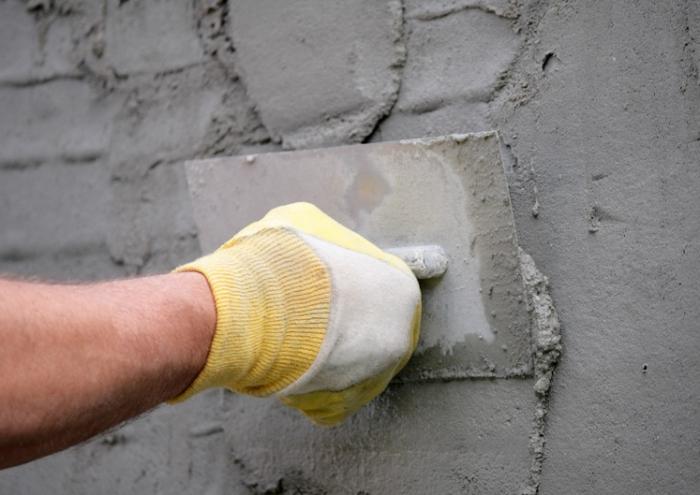Aligning the walls is not such a difficult process. Having studied the materials of this article, you can align and prepare the walls with your own hands for further puttying, painting and any kind of decoration.
Wall alignment with lighthouses
carried out after preliminary surface preparation. It is necessary to dismantle the old coating (wallpaper, etc.) and clean the wall of dust, then without fail to prime the surface. When choosing a soil, it should be noted that it is better to apply quartz soil on concrete surfaces. Since it gives the concrete walls a certain roughness, which gives a positive result when applying plaster. Walls of brick, aerated concrete, etc. primed with ordinary soil. Alignment of the walls is also carried out using
plaster mesh.The use of mesh is necessary if the plaster layer exceeds a thickness of 50 mm, or if the wall is made of a
gas-silicate block or aerated concrete. Alignment of the walls in the bathroom also involves the use of stucco, in case the
wall is sheathed with drywall, on which it is planned to
lay the tiles.
Installation of metal beacons (lighthouse profile) is carried out using plaster mortar in a vertical position. First, we trim the lighthouse profile to the height of the walls of the room, since it is available with a length of three meters.
To complete the installation of metal beacons, you will need a plumb line, rule and level. First of all, it is necessary to install extreme lighthouses. For this, we retreat ten centimeters from the corner and apply several tubercles of the stucco mortar (a distance of more than 40 cm), after which we set a beacon profile on these tubercles. We press the profile to the wall, starting from the central point of attachment. Using the level, we check the vertical position of the beacon. We do the same on the other side of the wall. Aligning the walls with the use of lighthouse profiles also provides for the installation of intermediate beacons with a distance of 1-1.5 m. Having chosen three points (top, bottom, center), we fix the dowels and pull the cord so that it is at the same level with the lighthouse profile . All other beacon profiles are installed on this cord. Before proceeding with the plastering of the walls, it is necessary to wait a certain time, so that the mortar, on which the lighthouse profile is fixed, freezes.

Before preparing the plaster mortar, be sure to read the instructions for its preparation, which is located on the package. Plaster is applied either with a trowel or with a trowel from bottom to top. Alignment of the walls, as a rule, is carried out in sections of 50 cm. After attaching the rule to the beacons and leading it from the bottom up, we remove the excess of stucco, thereby making the wall perfectly smooth. After
the plaster mortar more or less solidified (it is strong, but still fresh), it is possible to dismantle the beacons. Often, this is done after a couple of hours, but only if you are using a gypsum mixture. When using a cement mixture, it will be better to do it the next day. At the end of the dismantling of the lighthouse profiles, it is necessary to withstand some time to completely dry the wall, after which the lighthouse strobes can be repaired.